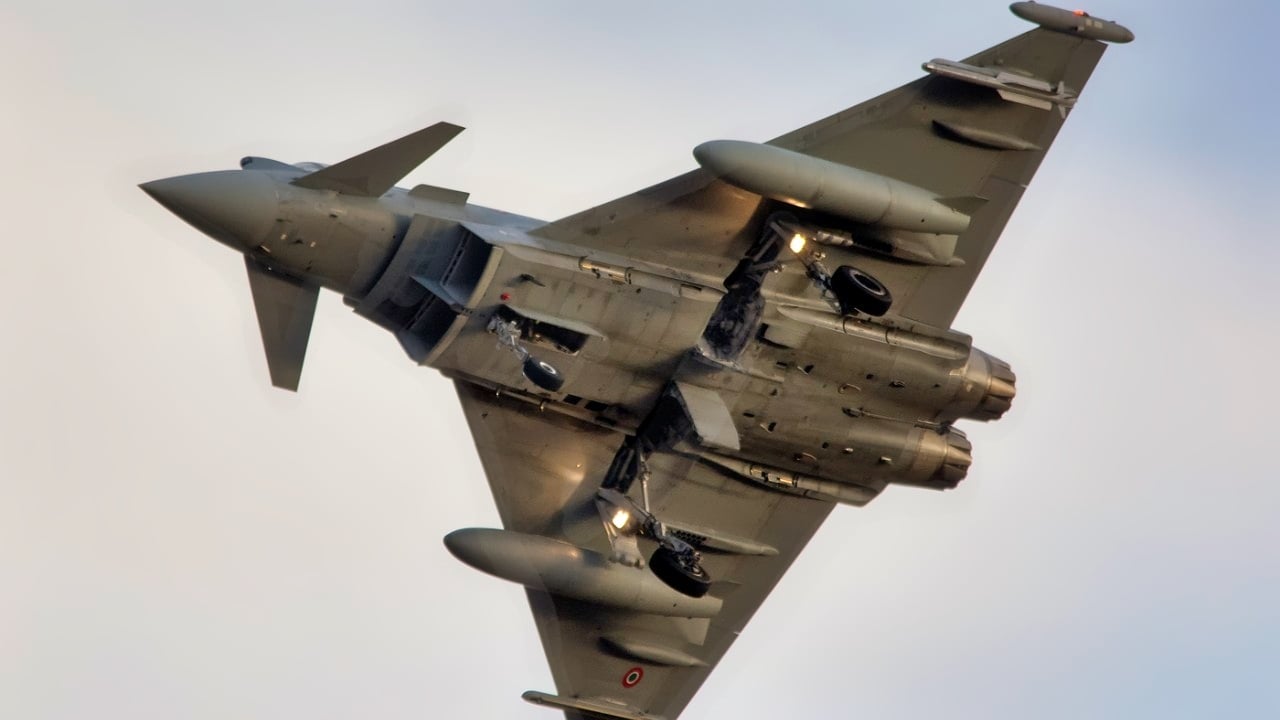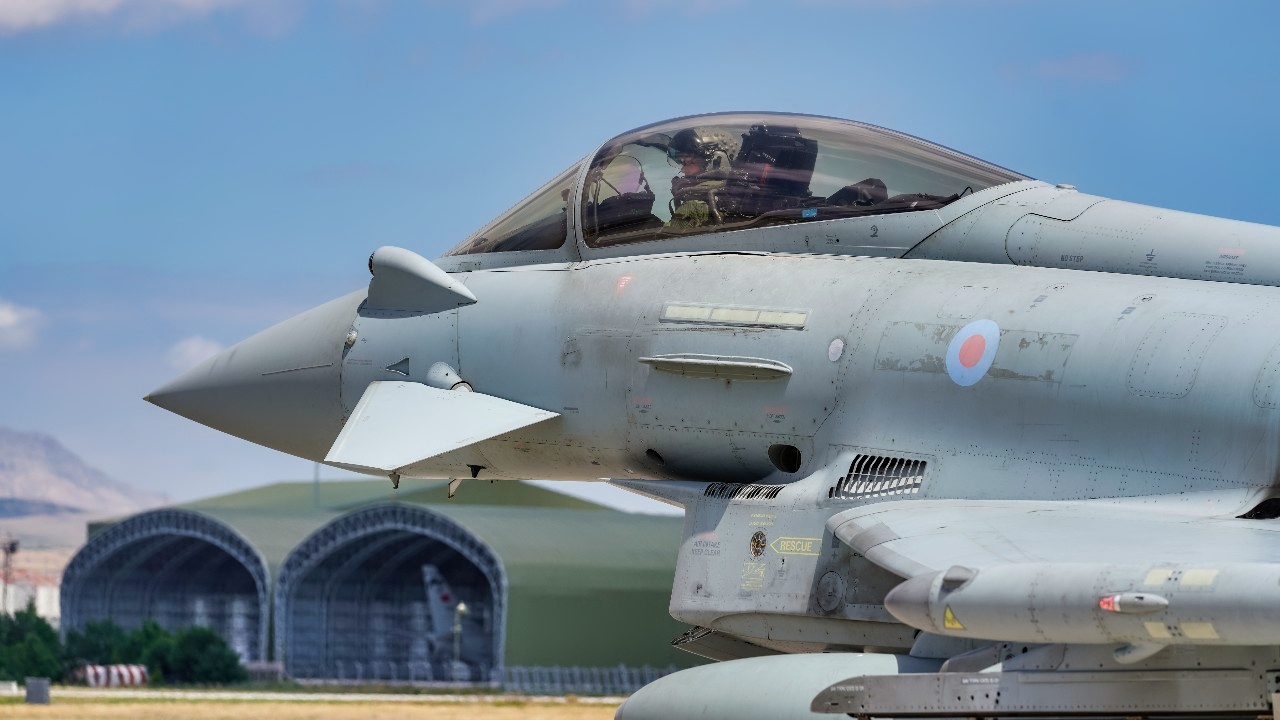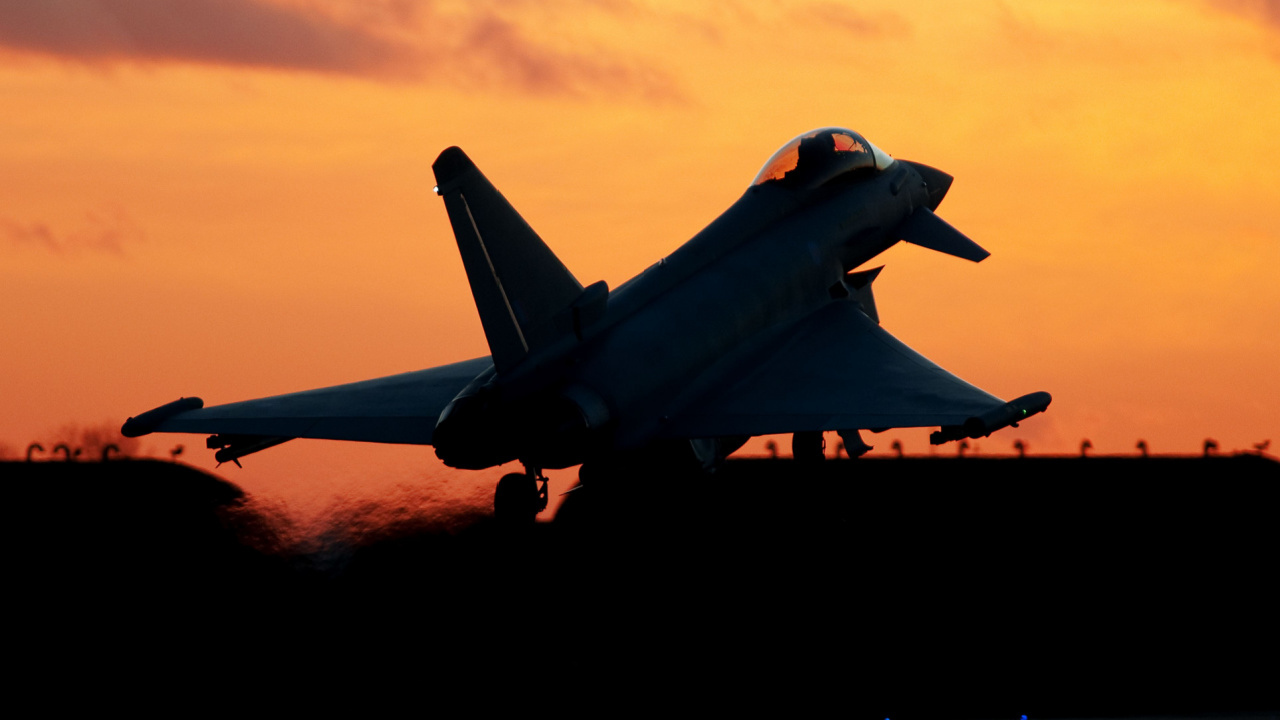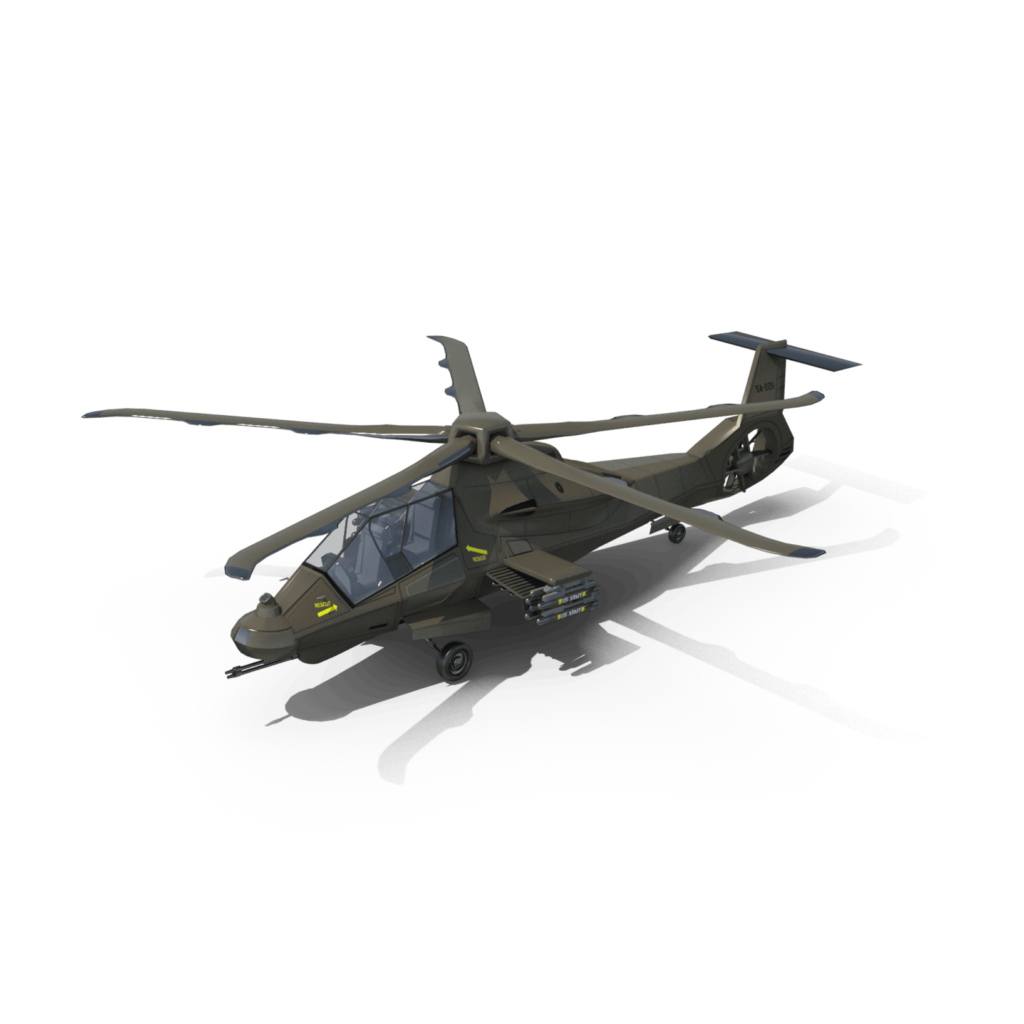
The Eurofighter Typhoon Fighter Is Nearing the End of the Line
What You Need to Know: The Eurofighter Typhoon, a fourth-generation multirole aircraft, has served as the Royal Air Force’s backbone for two decades. Despite the rise of fifth-generation stealth fighters like the F-35, the Typhoon remains effective for roles such as quick reaction alerts and air policing.

-Continuous upgrades have kept the Typhoon relevant, with plans for it to remain in service until at least 2040. However, the high costs of upgrades and the development of the Future Combat Air System (FCAS) could eventually render it obsolete.
-While its agility and advanced systems ensure its current capability, the non-stealth Typhoon’s future is limited.
Eurofighter Typhoon: Can It Survive in a Stealth-Dominated Future?
The Eurofighter Typhoon has been a staple of Britain’s Royal Air Force (RAF) for two decades. But with the onset of fifth-generation technology, and with the increased importance of stealth technology, can the non-stealth Typhoon remain relevant much longer?
The Future of the Eurofighter
The Eurofighter Typhoon is the fourth-generation workhorse of the RAF, much as the F-16 Fighting Falcon is the fourth-generation workhorse of the U.S. Air Force. Some jobs you just don’t need a fifth-generation stealth fighter for—like quick reaction alerts and air policing missions. Actually, the Typhoon is better suited to such roles than say an F-35 Joint Strike Fighter.
“If what you require are quick reaction alert and air-policing, then probably you want something with greater range, with better performance at an altitude that isn’t sensitive from a security point of view and is cheaper to operate,” said Royal United Services Institute fellow Justin Bronk. “The Typhoon is much better suited to that role.” Plus, the Typhoon can carry more ordnance, which makes the jet “arguably more effective” for missions in permissive and semi-permissive airspaces over places like Iraq and Syria.
And thanks to continuous upgrading, the Typhoon has remained more up to date than its origin would indicate, with contemporary electronics and radar and defense systems.
“But upgrades are costly,” according to Air Force Technology, and “some of the older aircraft will retire 15 years earlier than planned.” As the Typhoons are retired, it will be harder to maintain RAF expertise on air-superiority missions, simply because there will be fewer air-superiority fighters to train on.
Yet, the Typhoon isn’t going anywhere just yet; the jet will remain, as the RAF’s lynchpin, until at least 2040, “despite being more expensive upfront than the F-35A and costing similar to the F-35B.”
“The F-35, especially, the F-35B, is much more expensive to operate than the Typhoon,” Air Force Technology reported. “The Eurofighter doesn’t have a low-observable coating to maintain, but also because its supply chain is very much UK managed, and the UK has more ownership and leverage.”
The UK is also working, in collaboration with others to develop the Future Combat Air System (FCAS), a sixth-generation stealth fighter. The FCAS program is still in the early stages and is still many years away from production. However, the FCAS program represents the persistent pressure to innovate, which will inevitably render the Typhoon obsolete.
The Typhoon Fighter in Focus
The Typhoon is a twin-engine, supersonic multirole fighter with an instantly recognizable silhouette. Why so recognizable? The Typhoon has canards and a delta-wing, making it one of the easiest-to-identify jets in the sky.

First flown in 1994, over 700 Typhoons have been produced—for clients including Austria, Germany, Italy, Kuwait, Oman, Saudi Arabia, Spain, the UK, and Qatar. The international clientele is attracted to how agile the Typhoon flies, both at low and supersonic speeds. The jet’s agility stems from a relaxed stability design—one so inherently unstable that a pilot could not keep the jet stable without artificial inputs. So, to keep the relaxed stability airframe in stable flight, the Typhoon relies upon a quadruplex digital fly-by-wire system. The fly-by-wire system has been described as “carefree,” and prohibits the pilot from operating outside of the permittable flight envelope.
The Typhoon was constructed from lightweight materials, including 82 percent composites. The airframe has an estimated lifespan of 6,000 flight hours.
The Typhoon is not a stealth fighter. However, features were added to reduce the jet’s radar cross-section (RCS). One example is the jet inlets, which conceal the front of the engines from radar. Other radar targets, like the wing, canard, and fin leading edges, are aggressively swept, to avoid reflecting radar energy to the front of the airframe. And some external weapons are mounted semi-recessed into the airframe, partially shielding these weapons from radar. Lastly, radar-absorbent materials (RAM) were used to coast many of the jet’s reflector spots, like the wing leading edges, intake edges, rudder, and strakes.
The Typhoon is equipped with two Eurojet EJ200 engines, which can provide up to 20,230 pounds of thrust (with the afterburners engaged). The EJ200 used advanced technologies including, digital control and health monitoring, wide chord aerofoils, single crystal turbine blades, and a convergent/divergent exhaust nozzle—all resulting in a high thrust-to-weight ratio, multi-mission capability, supercruise, low fuel consumption, low cost of ownership, modular construction, and growth potential.
In all, the Eurofighter Typhoon is a capable aircraft, which will remain in service for at least another fifteen years. But the end is quickly approaching for the non-stealth fighter.
About the Author: Harrison Kass
Harrison Kass is a defense and national security writer with over 1,000 total pieces on issues involving global affairs. An attorney, pilot, guitarist, and minor pro hockey player, Harrison joined the US Air Force as a Pilot Trainee but was medically discharged. Harrison holds a BA from Lake Forest College, a JD from the University of Oregon, and an MA from New York University. Harrison listens to Dokken.
All images are Creative Commons and/or Shutterstock.


